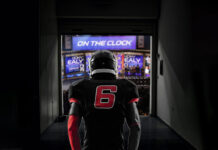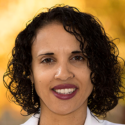James Swift explores the issue of racial incidents on today’s college campuses.
![]() arlier this year, the literal ghosts of the past seemingly sprung up at Oberlin College, a northern Ohio university that was among the first in the nation to admit both black and female students. In much publicized reports, students allegedly sighted an individual in a full Ku Klux Klan getup at the school; following a series of seemingly connected, racially-biased acts of vandalism on campus, Oberlin administrators cancelled classes and asked the Federal Bureau of Investigation to look into the incidents.
arlier this year, the literal ghosts of the past seemingly sprung up at Oberlin College, a northern Ohio university that was among the first in the nation to admit both black and female students. In much publicized reports, students allegedly sighted an individual in a full Ku Klux Klan getup at the school; following a series of seemingly connected, racially-biased acts of vandalism on campus, Oberlin administrators cancelled classes and asked the Federal Bureau of Investigation to look into the incidents.
While the Oberlin incidents were eventually determined to be hoaxes, racially-motivated episodes of the like, however, are hardly uncommon across the nation’s college campuses. The Journal of Blacks in Higher Education (JBHE) cites more than a dozen cases of racially-biased episodes at U.S. colleges over the last three years. Impromptu rallies, with campaign posters set ablaze, at the University of Mississippi following the reelection of Barack Obama last November; the discovery of nooses at the University of West Florida; and multiple instances of “black-faced” Caucasians attending official sorority and fraternity parties at the University of Southern Mississippi and the University of Florida are among the many episodes of “campus racial incidents” the organization lists on its website.
JBHE has compiled a database of such racially-motivated incidents for more than two decades. According to JBHE managing editor Robert Bruce Slater, the rate of such incidents over the last 20 years has remained fairly consistent; however, he also believes that the number of reported incidents are only a small sliver of the total number of racially-biased episodes that occur across America’s colleges.
“We suspect that the number of racist incidents that make their way into the press are a tiny fraction of what transpires,” Slater said. “Colleges are not eager to report such incidents to the general public as it makes them look bad and may scare away prospective black students.”
Slater said that racially-biased incidents on college campuses seem to spike during the early months of the year. He believes that some of the incidents may be reactionary to Martin Luther King, Jr. Day and Black History Month celebrations.
“Racial hatred may be more hidden today than a generation ago, but it remains prevalent throughout society, even on the campuses of our most progressive colleges and universities,” he said. “Americans on colleges campuses and elsewhere in society have become more politically correct about open displays of racism, but when no one is looking or when whites are sure they are alone amongst themselves, the racial slurs come out.”
The most common racially-biased events on U.S. college campuses, he said, involve racist graffiti. Racial slurs targeting African-American students are also quite common, but he said incidents of the like are rarely reported or investigated.
“If a black student is walking across campus and hears a passerby mutter the word ‘nigger,’” Slater stated, “is he or she likely to report it or just shrug it off as another indignity in a racist society?”
Most vandals, Slater said, are never identified by school or police officials. He suspects that most of the perpetrators are students, who likely engage in the activities while under the influence of alcohol.
However, college officials do tend to take racially-biased incidents seriously, Slater stated. “The canceling of classes at Oberlin shows just how serious they take it,“ he said. “When students at Ole Miss assembled to protest the reelection of President Obama, the administration formed a major committee that took four months to investigate it.”
In 2009, Morgane Richardson, a 27-year-old activist living in Brooklyn, started an initiative called Refuse the Silence, a platform for women of color to discuss their experiences as liberal arts students. She received an undergraduate degree at Middlebury College, which alike Oberlin, is a liberal arts school with an illustrious history. In 1823, it was the first institution in the nation to grant a bachelor’s degree to an African-American student, and in 1883, it become one of the first liberal arts colleges in the northeast to adopt a coeducational model.
“I received an amazing education at this institution, but throughout my time there I felt silenced as a queer woman of color,” she recalled. “Racial slurs were written on my door, students singled me out in classrooms and professors who wanted me to give the ‘black’ experience or perspective, and I experienced isolation from fellow students of color because I simply was ‘not black enough.’”
At Middlebury, Richardson was the president of a student organization called Women of Color. She said that the institution did not understand the experiences of the group members, nor did she feel as if administrators on campus were listening to them.
“The institution knows how to bring us onto their campus,” Richardson said many African-American female students oft remarked, “but doesn’t know what to do with us once we get here.”
At Middlebury, Richardson said she and other students were frequently targeted in racially-biased incidents. “In one instance, a swastika was drawn on my door while another student of color living on my hall had the word ‘Nigga’ written on his,” she said. “In another, campus security profiled a student as having ‘nappy hair.’”
In many instances, Richardson said individuals exposed to such incidents remain silent, for a litany of reason. “Reporting racist incidents on campus can and often does have a negative effect on the person who makes the complaint,” she said. “For faculty and staff, it could mean being denied tenure or a future contract and for students, it could lead to upsetting a professor and thus jeopardizing a grade or being called out negatively, by peers.”
Both institutionalized and “individualized” racism remain common and problematic on college campuses, she said. While she believes colleges have made progress in combating racism in higher education via diversity boards and freshmen orientation discussions, she believes some institutions remain oblivious to the issue. “While I have found that almost every institution believes they are taking racism seriously, many remain afraid to explore it’s existence on their campuses,” she said. “Rather, there is the idea that racism is so bad that it couldn’t possibly live on a progressive campus like Oberlin or Harvard . . . so, more often than not, racism gets swept under the rug and those affected by it are silenced.”
For the most part, Richardson said communities tend to “stick together” along racial and ethnic lines — sometimes by force and sometimes by choice. When denied the opportunity to interact in diversified backgrounds, she believes an individual is much likelier to embrace stereotypes about others. Those that engage in racially-biased activity, she said, are often the products of the social, political, educational and economic environments around them.
“You can find racism in the way we raise our children, the institutions and books teachers must teach from,” she said. “Racism is ingrained in all social, political, economic, aspects of our lives and has become more silent and subtle, making it difficult to confront.”
To address the nature of academic racism, Richardson advises colleges to explore cultural histories from many sides, while advocating a philosophy of understanding and peace. Educators should allows students an opportunity to discuss areas where they feel oppressed, she said, and develop positive senses of self-identity.
“Moreover, college institutions and its administrations should be committed to maintaining a diverse and inclusive campus where intolerance, discrimination and harassment are not tolerated,” she concluded. “Topics on race and ethnicity should be mainstreamed in all curriculums, especially in the math and sciences, and there needs to be a greater emphasis on recruiting and retaining faculty and staff of color to represent the changing makeup of the student body.”
James Swift is an Atlanta-based writer and reporter whose work has been published by the Juvenile Justice Information Exchange, Youth Today and the Center for Public Integrity. His multimedia project “Rural America: After the Recession” has received acclaim from both the Community Action Partnership and the Casey Journalism Center on Children and Families, and in 2013, he wrote the foreword for Jan Banning’s “Down and Out in the South.”












I found this article to be very interesting, particularly since I’m an alum of Oberlin College. However, what confused me was Richardson’s statement at the end,
“Moreover, college institutions and its administrations should be committed to maintaining a diverse and inclusive campus where intolerance, discrimination and harassment are not tolerated,”.
Shouldn’t it read “…where intolerance, discrimination and harassment ARE TOLERATED”? Maybe it was just a typo.
No, the sentence was stating that colleges and universities should be working towards a school community without “intolerance, discrimination and harassment”, which is why the word “not” was included.